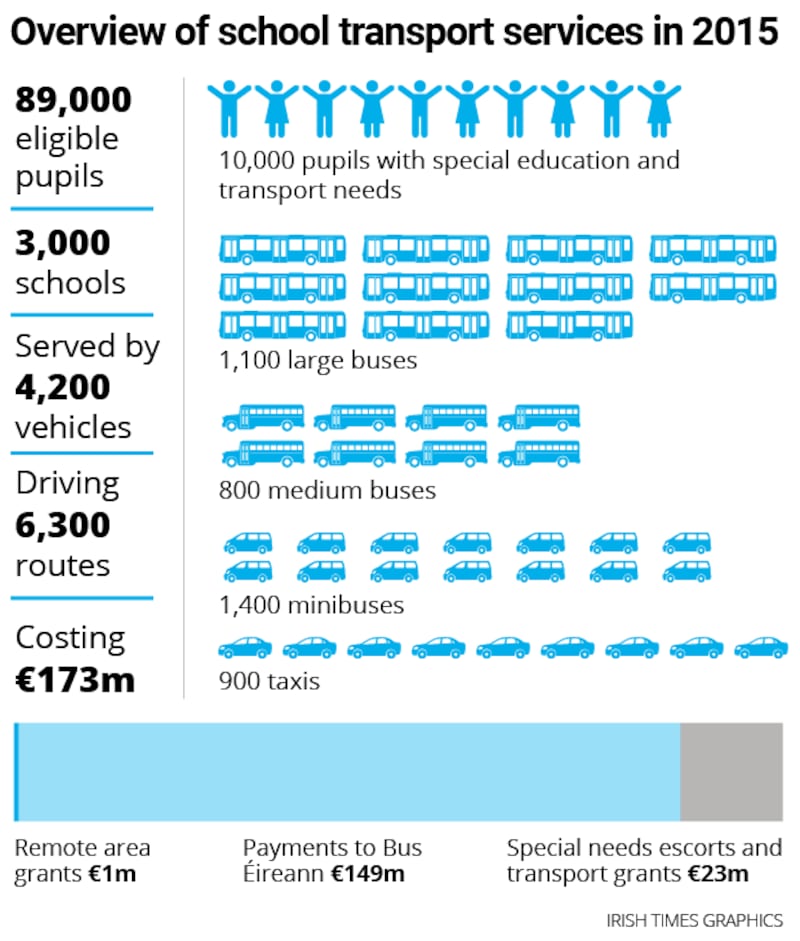Bus Éireann received more State cash to run the free school bus service than it needed between 2010 and 2014, the Comptroller and Auditor General has declared.
Under a 1975 contract, surpluses should be used to fund future school transport, but Bus Éireann’s accounts “do not support this position”, says the spending watchdog.
Saying that Bus Éireann now has €11.2 million of unused bus transport funds, the C&AG said existing accounting practices “are inadequate” and stronger reporting rules would have prevented it being paid more than necessary.

Meanwhile, the number of eligible primary and secondary school pupils using the service fell significantly in the years 2007-2015, despite a rise in the total number of pupils.
A report published by the Comptroller and Auditor General said the number of primary and post-primary eligible pupils using the service fell by 30 per cent between 2011 and 2015.
The number of pupils who qualified for free transport a decade ago stood at 127,000 (16 per cent of enrolled pupils), but this had fallen to 89,000 (10 per cent of enrolled pupils)by 2015.
The fall occurred despite the fact there were more than 883,900 children in the school system in 2015 – up by more than 100,000 on the figure recorded in 2007.
Though the C&AG’s report does not identify the cause of the fall, it suggests it could be linked to higher charges introduced in 2011 and changes a year later that limited free travel to journeys only to the nearest school.
Spare capacity
Saying the Department of Education must better predict demand, the C&AG said nearly half the seats on school buses were no longer needed for qualifying pupils by 2015; up from a quarter, or so in 2007.
However, many of these vacant seats were filled by a higher number of pupils qualifying because they had special needs – up by nearly one-third from about 7,500 in 2007 to about 9,800 in 2015 .
However, 22,000 pupils, who do not qualify for a full free bus pass, were issued with concessionary tickets in 2015. That number is continuing to grow significantly. Because of that, the number of vacant seats now stands at 35 per cent
A value for money report published in December 2016 reported the number of concessionary tickets issued jumped from 4,800 in 2011 to some 27,000 in the 2016/2017 school year.
40-year agreement
The Department of Education/Bus Éireann contract has “not substantially changed” in 40 years, says the C&AG, which leaves the Department of Education without information required for “effective management and oversight”.
Existing routes should be reviewed every five years, or less, while a new contract should be agreed between the sides to provide clarity on their respective obligations and responsibilities.
The 1975 arrangement between the State and Bus Éireann has come under international scrutiny in recent years following complaints from the private sector. The European Commission opened an investigation into the arrangement in July 2007 following complaints by a representative body for private bus companies in Ireland.
It found that State funding gave Bus Éireann a “selective economic advantage” that is not compatible with EU rules and constituted “existing” State aid. Ireland disagrees with the commission’s view.









